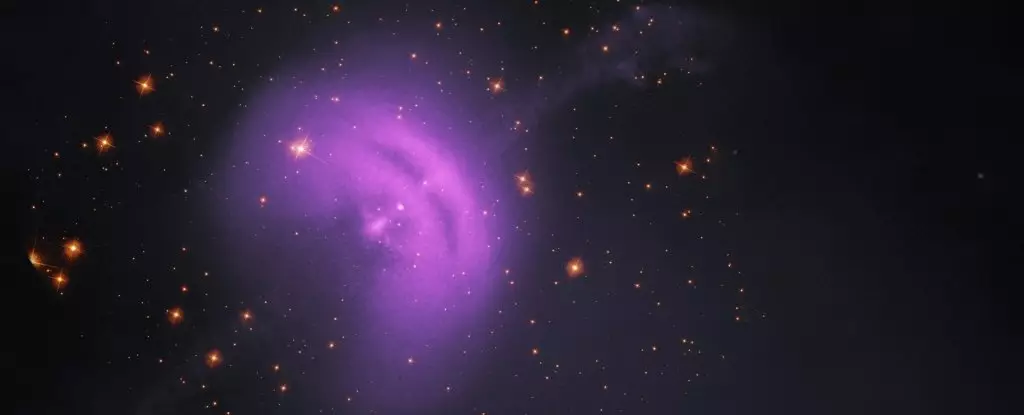Cosmic rays, a myriad of high-energy particles bombarding Earth from outer space, have long intrigued scientists due to their mysterious origins and potential implications for astrophysics. Among these particles, the electrons and positrons known as cosmic ray electrons (CRe) stand out due to their remarkable energies, reaching up to 40 teraelectronvolts (TeV). Recent research conducted at the H.E.S.S. Observatory in Namibia has shed light on these elusive particles, revealing that they likely originate from nearby sources within our Milky Way galaxy. This article delves into the implications of these findings and what they mean for our understanding of cosmic phenomena.
Cosmic ray electrons, although representing a small fraction of all cosmic rays, are believed to stem from extreme cosmic environments like supernova remnants, pulsars, and regions surrounding black holes. When these electrons enter Earth’s atmosphere, they interact with atoms, producing Cherenkov radiation, an effect analogous to a sonic boom but in light form. This phenomenon occurs when particles exceed the speed of light in a specific medium, resulting in faint but detectable light that the H.E.S.S. Observatory was designed to capture.
However, differentiating CRe from gamma rays proves to be a complicated endeavor. As gamma rays are massless particles traveling in straight lines, they offer clear paths back to their sources. In contrast, the charged nature of electrons means their trajectories can be erratic due to interactions with magnetic fields, complicating source identification. Thus, researchers faced a dual challenge: detecting these energetic electrons and distinguishing them from the vast gamma-ray background.
To identify high-energy cosmic ray electrons, H.E.S.S. researchers meticulously analyzed extensive observational data. They compiled a list of potential CRe events, acknowledging that their sample likely included a mixture of electron and gamma-ray events. The exceptional energies observed in these candidates suggest that they did not come from distant cosmic phenomena; rather, their high energy indicates that they originated from sources relatively close to Earth, further narrowing the potential cosmic neighborhoods from which they emerged.
One notable finding is the energy distribution of these particles, which indicates a sharp drop-off at around 1.17 TeV. This sudden change in slope suggests that only a limited number of sources might be contributing to these high-energy cosmic ray electrons. Such a clear boundary is significant; it implies that if multiple sources were at play, the resulting energy spectrum would appear much smoother rather than exhibiting the pronounced cutoff observed.
Despite the strides made in identifying candidate sources for these cosmic ray electrons, many questions remain unanswered. The volume of space around our Solar System that could host these possible sources is surprisingly small, spanning only a few thousand light-years. This restricted area opens up a limited pool of candidates, with possibilities including the Monogem Ring, the Wolf-Rayet star γ2 Velorum, and notable pulsars such as Vela and Geminga. It’s even possible that the origins point to supernova remnants so ancient that they’ve largely faded from view.
With ongoing research, scientists aim to identify patterns in the arrival directions of cosmic ray electrons to hone in on their sources more precisely. Such investigations will be challenging but crucial in expanding our understanding of the cosmic landscape. By building a profile of the sources contributing to these energetic electrons, researchers can piece together a larger picture of how energy transitions through the cosmos.
The implications of these discoveries extend far beyond simply cataloging new particles. Understanding where cosmic ray electrons originate aids in deciphering the energetic processes that drive the universe. As astrophysicist Mathieu de Naurois suggests, this research not only fills a gap in our knowledge about high-energy cosmic phenomena but also establishes a benchmark for future studies in this domain.
The collaboration between international research teams and observatory facilities will be vital as scientists strive to deepen their comprehension of cosmic rays. The ongoing efforts promise to reveal not only more about cosmic ray origins but also the intricate workings of astrophysical processes that influence our universe.
The investigation of cosmic ray electrons at the H.E.S.S. Observatory represents a significant step forward in astrophysics, highlighting how interconnected our universe is. Though challenges remain in pinpointing exact sources and understanding the myriad of cosmic forces at work, every finding shapes our appreciation for the complexities of cosmic phenomena. As technology and methodologies evolve, the astronomical community stands poised for even greater revelations in the quest to uncover the origins of these mysterious and powerful particles.


Leave a Reply